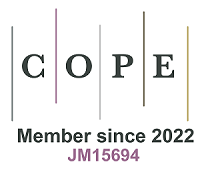REFERENCES
1. Kang L, Cao G, Jing W, Liu J, Liu M. Global, regional, and national incidence and mortality of congenital birth defects from 1990 to 2019. Eur J Pediatr. 2023;182:1781-92.
2. Pagel C, Brown KL, Crowe S, Utley M, Cunningham D, Tsang VT. A mortality risk model to adjust for case mix in UK paediatric cardiac surgery. Health Serv Deliv Res. 2013:1.
3. Ferentzi H, Pfitzer C, Rosenthal LM, Berger F, Schmitt KRL. Long-term early development research in congenital heart disease (LEADER-CHD): a study protocol for a prospective cohort observational study investigating the development of children after surgical correction for congenital heart defects during the first 3 years of life. BMJ Open. 2017;7:e018966.
4. Plana MN, Zamora J, Suresh G, Fernandez-Pineda L, Thangaratinam S, Ewer AK. Pulse oximetry screening for critical congenital heart defects. Cochrane Database Syst Rev. 2018;3:CD011912.
5. Bonnet D. Impacts of prenatal diagnosis of congenital heart diseases on outcomes. Transl Pediatr. 2021;10:2241-9.
6. van Nisselrooij AEL, Teunissen AKK, Clur SA, et al. Why are congenital heart defects being missed? Ultrasound Obstet Gynecol. 2020;55:747-57.
7. Sharland G. Routine fetal cardiac screening: what are we doing and what should we do? Prenat Diagn. 2004;24:1123-9.
8. O'Brien J, Hayder H, Zayed Y, Peng C. Overview of microRNA biogenesis, mechanisms of actions, and circulation. Front Endocrinol (Lausanne). 2018;9:402.
9. Ortiz-Quintero B. Extracellular microRNAs as intercellular mediators and noninvasive biomarkers of cancer. Cancers (Basel). 2020;12:3455.
10. Gu H, Chen L, Xue J, et al. Expression profile of maternal circulating microRNAs as non-invasive biomarkers for prenatal diagnosis of congenital heart defects. Biomed Pharmacother. 2019;109:823-30.
11. Zhu S, Cao L, Zhu J, et al. Identification of maternal serum microRNAs as novel non-invasive biomarkers for prenatal detection of fetal congenital heart defects. Clin Chim Acta. 2013;424:66-72.
12. Zedníková I, Chylíková B, Šeda O, et al. Genome-wide miRNA profiling in plasma of pregnant women with down syndrome fetuses. Mol Biol Rep. 2020;47:4531-40.
13. Erturk B, Karaca E, Aykut A, et al. Prenatal evaluation of microRNA expressions in pregnancies with down syndrome. Biomed Res Int. 2016;2016:5312674.
14. Zbucka-Kretowska M, Niemira M, Paczkowska-Abdulsalam M, et al. Prenatal circulating microRNA signatures of foetal down syndrome. Sci Rep. 2019;9:2394.
15. Balaraman S, Schafer JJ, Tseng AM, et al. Plasma miRNA profiles in pregnant women predict infant outcomes following prenatal alcohol exposure. PLoS One. 2016;11:e0165081.
16. Yin Y, Liu M, Yu H, Zhang J, Zhou R. Circulating microRNAs as biomarkers for diagnosis and prediction of preeclampsia: a systematic review and meta-analysis. Eur J Obstet Gynecol Reprod Biol. 2020;253:121-32.
17. Kim SH, MacIntyre DA, Binkhamis R, et al. Maternal plasma miRNAs as potential biomarkers for detecting risk of small-for-gestational-age births. EBioMedicine. 2020;62:103145.
18. Elovitz MA, Anton L, Bastek J, Brown AG. Can microRNA profiling in maternal blood identify women at risk for preterm birth? Am J Obstet Gynecol. 2015;212:782.e1-5.
19. Adamova P, Lotto RR, Powell AK, Dykes IM. Are there foetal extracellular vesicles in maternal blood? J Mol Med (Berl). 2023;101:65-81.
20. Sheller-Miller S, Choi K, Choi C, Menon R. Cyclic-recombinase-reporter mouse model to determine exosome communication and function during pregnancy. Am J Obstet Gynecol. 2019;221:502.e1-502.e12.
21. Nguyen SL, Ahn SH, Greenberg JW, et al. Integrins mediate placental extracellular vesicle trafficking to lung and liver in vivo. Sci Rep. 2021;11:4217.
22. Sarker S, Scholz-Romero K, Perez A, et al. Placenta-derived exosomes continuously increase in maternal circulation over the first trimester of pregnancy. J Transl Med. 2014;12:204.
23. Salomon C, Guanzon D, Scholz-Romero K, et al. Placental exosomes as early biomarker of preeclampsia: potential role of exosomal microRNAs across gestation. J Clin Endocrinol Metab. 2017;102:3182-94.
24. Sato F, Tsuchiya S, Terasawa K, Tsujimoto G. Intra-platform repeatability and inter-platform comparability of microRNA microarray technology. PLoS One. 2009;4:e5540.
25. Cuk K, Zucknick M, Heil J, et al. Circulating microRNAs in plasma as early detection markers for breast cancer. Int J Cancer. 2013;132:1602-12.
27. Hong LZ, Zhou L, Zou R, et al. Systematic evaluation of multiple qPCR platforms, nanostring and miRNA-Seq for microRNA biomarker discovery in human biofluids. Sci Rep. 2021;11:4435.
28. Potla P, Ali SA, Kapoor M. A bioinformatics approach to microRNA-sequencing analysis. Osteoarthr Cartil Open. 2021;3:100131.
29. Eastel JM, Lam KW, Lee NL, et al. Application of Nanostring technologies in companion diagnostic development. Expert Rev Mol Diagn. 2019;19:591-8.
30. Monsellato I, Garibaldi E, Cassinotti E, et al. Expression levels of circulating miRNAs as biomarkers during multimodal treatment of rectal cancer - TiMiSNAR-mirna: a substudy of the TiMiSNAR Trial (NCT03962088). Trials. 2020;21:678.
31. Gray C, McCowan LM, Patel R, Taylor RS, Vickers MH. Maternal plasma miRNAs as biomarkers during mid-pregnancy to predict later spontaneous preterm birth: a pilot study. Sci Rep. 2017;7:815.
32. Spiliopoulos M, Haddad A, Al-Kouatly HB, et al. MicroRNA analysis in maternal blood of pregnancies with preterm premature rupture of membranes reveals a distinct expression profile. PLoS One. 2022;17:e0277098.
33. Filardi T, Catanzaro G, Grieco GE, et al. Identification and validation of miR-222-3p and miR-409-3p as plasma biomarkers in gestational diabetes mellitus sharing validated target genes involved in metabolic homeostasis. Int J Mol Sci. 2022;23:4276.
34. Pillay P, Maharaj N, Moodley J, Mackraj I. Placental exosomes and pre-eclampsia: maternal circulating levels in normal pregnancies and, early and late onset pre-eclamptic pregnancies. Placenta. 2016;46:18-25.
35. Foye C, Yan IK, David W, et al. Comparison of miRNA quantitation by Nanostring in serum and plasma samples. PLoS One. 2017;12:e0189165.
36. Géczi D, Nagy B, Szilágyi M, et al. Analysis of circulating miRNA profile in plasma samples of glioblastoma patients. Int J Mol Sci. 2021;22:5058.
37. Permuth JB, Mesa T, Williams SL, et al. A pilot study to troubleshoot quality control metrics when assessing circulating miRNA expression data reproducibility across study sites. Cancer Biomark. 2022;33:467-78.
38. Desai CS, Khan A, Bellio MA, et al. Characterization of extracellular vesicle miRNA identified in peripheral blood of chronic pancreatitis patients. Mol Cell Biochem. 2021;476:4331-41.
39. Oikonomopoulos A, Polytarchou C, Joshi S, Hommes DW, Iliopoulos D. Identification of circulating microRNA signatures in Crohn’s disease using the nanostring ncounter technology. Inflamm Bowel Dis. 2016;22:2063-9.
40. Foley HB, Howe CG, Eckel SP, et al. Extracellular vesicle-enriched miRNA profiles across pregnancy in the MADRES cohort. PLoS One. 2021;16:e0251259.
41. Waggott D, Chu K, Yin S, Wouters BG, Liu FF, Boutros PC. Nanostringnorm: an extensible R package for the pre-processing of NanoString mRNA and miRNA data. Bioinformatics. 2012;28:1546-8.
42. NanoString. Gene expression data analysis guidelines. Available from: https://nanostring.com/wp-content/uploads/Gene_Expression_Data_Analysis_Guidelines.pdf. [Last accessed on 5 Sep 2024].
43. NanostringTechnologies. TECH NOTE: nCounter® miRNA expression analysis in plasma and serum samples. 2019. Available from: https://university.nanostring.com/tech-note-mirna-expression-analysis-in-plasmaserum-samples/894685. [Last accessed on 5 Sep 2024].
44. Andersen CL, Jensen JL, Ørntoft TF. Normalization of real-time quantitative reverse transcription-PCR data: a model-based variance estimation approach to identify genes suited for normalization, applied to bladder and colon cancer data sets. Cancer Res. 2004;64:5245-50.
45. Ajayi AF, Akhigbe RE. Staging of the estrous cycle and induction of estrus in experimental rodents: an update. Fertil Res Pract. 2020;6:5.
46. Wu J, Cai H, Xiang YB, et al. Intra-individual variation of miRNA expression levels in human plasma samples. Biomarkers. 2018;23:339-46.
47. Blondal T, Jensby Nielsen S, Baker A, et al. Assessing sample and miRNA profile quality in serum and plasma or other biofluids. Methods. 2013;59:S1-6.
48. Kirschner MB, Kao SC, Edelman JJ, et al. Haemolysis during sample preparation alters microRNA content of plasma. PLoS One. 2011;6:e24145.
49. Aguilera-Rojas M, Sharbati S, Stein T, Candela Andrade M, Kohn B, Einspanier R. Systematic analysis of different degrees of haemolysis on miRNA levels in serum and serum-derived extracellular vesicles from dogs. BMC Vet Res. 2022;18:355.
50. Shah JS, Soon PS, Marsh DJ. Comparison of methodologies to detect low levels of hemolysis in serum for accurate assessment of serum microRNAs. PLoS One. 2016;11:e0153200.
51. Jolliffe IT, Cadima J. Principal component analysis: a review and recent developments. Philos Trans A Math Phys Eng Sci. 2016;374:20150202.
52. Chan SF, Cheng H, Goh KK, Zou R. Preanalytic methodological considerations and sample quality control of circulating miRNAs. J Mol Diagn. 2023;25:438-53.
53. Sunderland N, Skroblin P, Barwari T, et al. MicroRNA biomarkers and platelet reactivity. Circ Res. 2017;120:418-35.
54. Teruel-Montoya R, Kong X, Abraham S, et al. MicroRNA expression differences in human hematopoietic cell lineages enable regulated transgene expression. PLoS One. 2014;9:e102259.
55. Zampetaki A, Kiechl S, Drozdov I, et al. Plasma microRNA profiling reveals loss of endothelial miR-126 and other microRNAs in type 2 diabetes. Circ Res. 2010;107:810-7.
56. Livak KJ, Schmittgen TD. Analysis of relative gene expression data using real-time quantitative PCR and the 2(-Delta Delta C(T)) method. Methods. 2001;25:402-8.
57. Yuan JS, Reed A, Chen F, Stewart CN Jr. Statistical analysis of real-time PCR data. BMC Bioinformatics. 2006;7:85.
58. Rieu I, Powers SJ. Real-time quantitative RT-PCR: design, calculations, and statistics. Plant Cell. 2009;21:1031-3.
59. Stefanski AL, Martinez N, Peterson LK, et al. Murine trophoblast-derived and pregnancy-associated exosome-enriched extracellular vesicle microRNAs: implications for placenta driven effects on maternal physiology. PLoS One. 2019;14:e0210675.
60. Zhang J, Tao Y, Cai R, Wang Y. miR-196a-5p-Rich extracellular vesicles from trophoblasts induce M1 polarization of macrophages in recurrent miscarriage. J Immunol Res. 2022;2022:6811632.
61. Zhao G, Guo S, Jiang K, et al. MiRNA profiling of plasma-derived exosomes from dairy cows during gestation. Theriogenology. 2019;130:89-98.
62. Akbar R, Ullah K, Rahman TU, et al. miR-183-5p regulates uterine receptivity and enhances embryo implantation. J Mol Endocrinol. 2020;64:43-52.
63. Lykoudi A, Kolialexi A, Lambrou GI, et al. Dysregulated placental microRNAs in early and late onset preeclampsia. Placenta. 2018;61:24-32.
64. Yang X, Meng T. MicroRNA-431 affects trophoblast migration and invasion by targeting ZEB1 in preeclampsia. Gene. 2019;683:225-32.
65. Thottakara T, Lund N, Krämer E, Kirchhof P, Carrier L, Patten M. A novel miRNA screen identifies miRNA-4454 as a candidate biomarker for ventricular fibrosis in patients with hypertrophic cardiomyopathy. Biomolecules. 2021;11:1718.
66. Kim N, Choung H, Kim YJ, et al. Serum microRNA as a potential biomarker for the activity of thyroid eye disease. Sci Rep. 2023;13:234.










